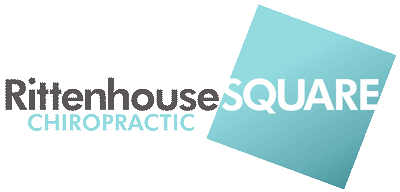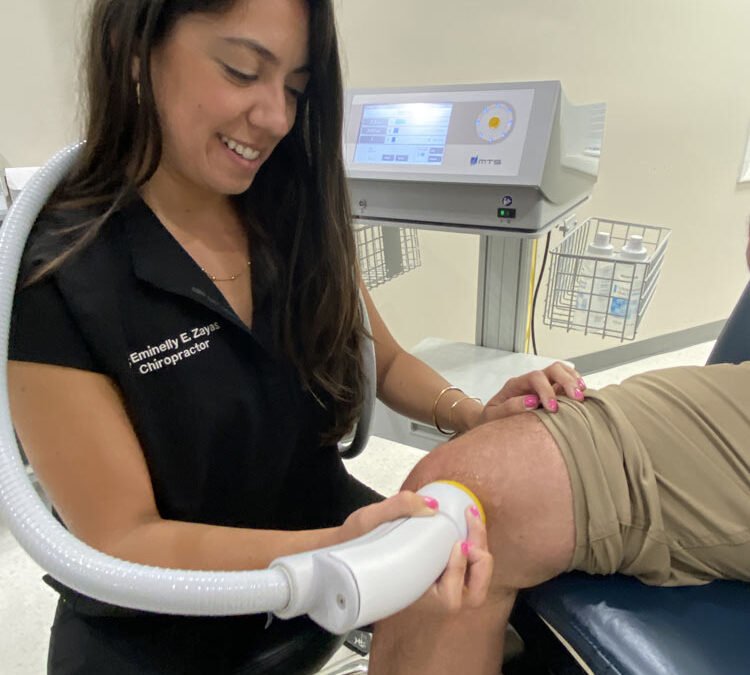Accelerating the healing of soft tissue has become increasingly crucial, with a growing emphasis on innovative approaches. SoftWave therapy emerges as a remarkable method, harnessing advanced technology to expedite recovery and enhance overall well-being. This article delves into the transformative potential of SoftWave Therapy, shedding light on its remarkable benefits and applications in the field of tissue healing.
The Science Behind SoftWave Therapy
SoftWave Therapy operates on the principles of acoustic waves, a cutting-edge technique that harnesses the power of sound waves to stimulate healing processes within the body. These acoustic waves are carefully calibrated to penetrate deep into soft tissues, initiating a cascade of biological responses. This therapy relies on mechanotransduction, whereby mechanical forces are converted into biochemical signals within cells. This process triggers the release of growth factors, increased blood flow, and the activation of repair mechanisms.
One of the key scientific foundations of SoftWave Therapy lies in its ability to address acute and chronic soft tissue injuries. It does so by promoting cellular regeneration and collagen production, which are vital components of tissue repair. By delving into the cellular and molecular mechanisms at play, we can better understand how this therapy accelerates healing and offers relief to individuals dealing with a range of musculoskeletal conditions.
SoftWave Therapy stands out for its non-invasive nature. Unlike surgical procedures, it allows for tissue healing without the need for incisions or injections. This aspect of the therapy is rooted in its capacity to stimulate the body’s innate healing mechanisms. By exploring the science behind this non-invasive approach, we uncover the potential for a more comfortable and efficient healing process for various soft tissue injuries.
As we delve into the scientific intricacies of SoftWave Therapy, it becomes evident that this revolutionary treatment has the potential to revolutionize how we approach soft tissue healing. By understanding the underlying principles, we can appreciate how they align with the body’s natural processes and offer a promising avenue for recovery and well-being.
Benefits of SoftWave Therapy for Tissue Healing
SoftWave Therapy, driven by its innovative approach, brings forth a multitude of benefits for tissue healing, making it a compelling choice for individuals seeking effective recovery solutions:
- Enhanced Healing Speed: SoftWave Therapy accelerates the natural healing process by promoting increased blood flow and the release of growth factors. This leads to faster recovery times for various soft tissue injuries.
- Pain Reduction: Patients often experience significant pain relief from SoftWave Therapy. The acoustic waves stimulate the body’s pain-inhibiting mechanisms, relieving discomfort and improving overall well-being.
- Non-Invasiveness: SoftWave Therapy is non-invasive, eliminating the need for surgical procedures or injections. This feature reduces the risk of complications and ensures a less disruptive treatment experience.
- Versatile Applications: The therapy’s versatility allows it to address a wide range of soft tissue injuries, including muscle strains, tendonitis, and ligament issues. It caters to diverse medical conditions, making it a valuable option for individuals with varying healthcare needs.
- Minimal Downtime: SoftWave Therapy typically involves minimal downtime, allowing patients to resume their daily activities more swiftly than traditional treatments would permit.
- Long-Term Benefits: Beyond immediate relief, SoftWave Therapy fosters long-term healing by stimulating tissue regeneration and collagen production. This means that patients can experience lasting improvements in their condition.
- Non-Pharmaceutical Solution: SoftWave Therapy offers a non-pharmaceutical approach to healing, reducing the reliance on medications and their potential side effects.
These benefits underscore SoftWave Therapy’s significance in tissue healing, positioning it as a promising option for individuals seeking effective, non-invasive, and comprehensive recovery solutions.
The Non-Invasive Nature of SoftWave Treatment
One of the most compelling aspects of SoftWave Therapy is its non-invasive nature, which distinguishes it from many traditional treatment methods. This therapy offers a gentle yet effective approach to tissue healing without the need for surgical interventions or invasive procedures. Instead, it harnesses the power of acoustic waves to stimulate the body’s innate healing processes.
SoftWave Therapy’s non-invasive character has significant advantages for patients. It minimizes the risks associated with surgery, such as infection or complications from incisions. Patients can undergo treatment without the discomfort and potential side effects of invasive procedures, making it an attractive option for those who prefer less disruptive therapies. This approach aligns with the growing demand for minimally invasive medical treatments.
The non-invasive nature of SoftWave Therapy contributes to shorter recovery times. Unlike surgery, which often requires an extended period of rest and rehabilitation, patients undergoing SoftWave Treatment typically experience minimal downtime. They can return to their daily activities sooner, which is especially beneficial for individuals with busy lives or athletes aiming for a swift recovery.
In summary, SoftWave Therapy’s non-invasive approach offers a safer, more comfortable, and quicker path to tissue healing. It exemplifies a modern medical approach that prioritizes patient well-being and convenience while delivering effective results.
SoftWave Therapy vs. Traditional Healing Methods
SoftWave Therapy stands as a groundbreaking alternative to traditional soft tissue healing methods. When compared to conventional approaches, it brings about several notable distinctions that set it apart:
- Non-Surgical Approach: Unlike traditional surgical interventions, SoftWave Therapy eliminates the need for incisions or invasive procedures. This makes it a less intimidating and lower-risk option for individuals seeking relief from soft tissue injuries. Patients can benefit from accelerated healing without the associated discomfort and potential surgery complications.
- Pain Management: Traditional methods often rely heavily on pain medications to manage discomfort during recovery. In contrast, SoftWave Therapy can provide substantial pain relief without needing pharmaceuticals. It utilizes acoustic waves to trigger the body’s natural pain-inhibiting mechanisms, enhancing patient comfort.
- Faster Recovery: SoftWave Therapy’s ability to enhance blood circulation and stimulate tissue regeneration translates into faster recovery times. Traditional healing methods may require more extended periods of rest and rehabilitation, whereas patients undergoing SoftWave Treatment can often resume their daily activities more swiftly.
- Versatility: SoftWave Therapy’s versatility is a notable advantage. It can effectively address a wide range of soft tissue injuries, making it applicable to various medical conditions. Traditional methods may not offer the same level of flexibility and targeted treatment.
SoftWave Therapy presents a modern and patient-centric approach to soft tissue healing, offering distinct advantages over traditional methods. Its non-invasive nature, ability to manage pain, expedite recovery, and versatile applications make it a compelling choice for individuals seeking efficient and effective healing solutions.
Addressing Common Injuries with SoftWave Therapy
SoftWave Therapy emerges as a valuable tool for addressing a wide range of common soft tissue injuries that individuals may encounter. This innovative treatment method offers effective solutions for conditions such as:
- Muscle Strains: SoftWave Therapy’s ability to stimulate tissue repair and reduce inflammation is particularly beneficial for individuals with muscle strains. Whether it results from physical activity or daily wear and tear, this therapy can expedite the healing process and alleviate discomfort.
- Tendonitis: Tendonitis, characterized by inflamed tendons, is common among athletes and those with repetitive motion jobs. SoftWave Therapy’s ability to reduce inflammation and promote tissue regeneration makes it a valuable option for managing this condition.
- Ligament Injuries: SoftWave Therapy’s non-invasive nature is especially advantageous for individuals with ligament injuries. It can aid in healing damaged ligaments without the need for surgical interventions, offering a less disruptive path to recovery.
- Sports Injuries: Athletes often face a variety of soft tissue injuries, from sprained muscles to ligament tears. SoftWave Therapy’s potential to accelerate healing and pain relief can help athletes get back in the game more quickly.
By addressing these common soft tissue injuries, SoftWave Therapy plays a crucial role in improving the quality of life for individuals who seek efficient and non-invasive healing solutions. Its versatility and effectiveness in managing these conditions make it a valuable asset in healthcare.
Integrating SoftWave Therapy into Your Recovery Plan
Integrating SoftWave Therapy into your recovery plan can be a transformative step toward expediting healing and achieving optimal results. Here’s a guide on how to incorporate this innovative therapy effectively:
- Consultation and Assessment: Begin by scheduling a consultation with a qualified healthcare provider experienced in SoftWave Therapy. During this initial assessment, your healthcare provider will evaluate your condition, medical history, and treatment goals. This step is crucial in determining whether SoftWave Therapy suits your needs.
- Personalized Treatment Plan: Based on the assessment, your healthcare provider will develop a personalized treatment plan tailored to your unique requirements. This plan will outline the frequency and duration of SoftWave Therapy sessions needed to achieve the best results. It may also incorporate other complementary treatments if necessary.
- Active Participation: Your active participation is key to the success of your recovery plan. This may include following any prescribed exercises or lifestyle modifications your healthcare provider recommends. Consistency and adherence to the treatment plan are essential for optimal outcomes.
- Monitoring and Adjustments: Throughout your SoftWave Therapy journey, regular monitoring and progress assessments will occur. Your healthcare provider will track your response to treatment and make any necessary adjustments to ensure that you are on the path to recovery.
By integrating SoftWave Therapy into your recovery plan, you can benefit from its non-invasive approach, pain management capabilities, and ability to expedite healing. Working closely with your healthcare provider, you can maximize the advantages of this innovative therapy and take significant strides toward improved well-being.
Contact Rittenhouse Square Chiropractic
If you’re interested in exploring the benefits of SoftWave Therapy or have any questions regarding our services, Rittenhouse Square Chiropractic is here to assist you. Our dedicated team is committed to providing you with the highest level of care and expertise in soft tissue healing. Feel free to contact us to schedule a consultation or inquire about how SoftWave Therapy can be integrated into your recovery plan. We look forward to partnering with you on your journey to improved well-being and faster tissue healing.

